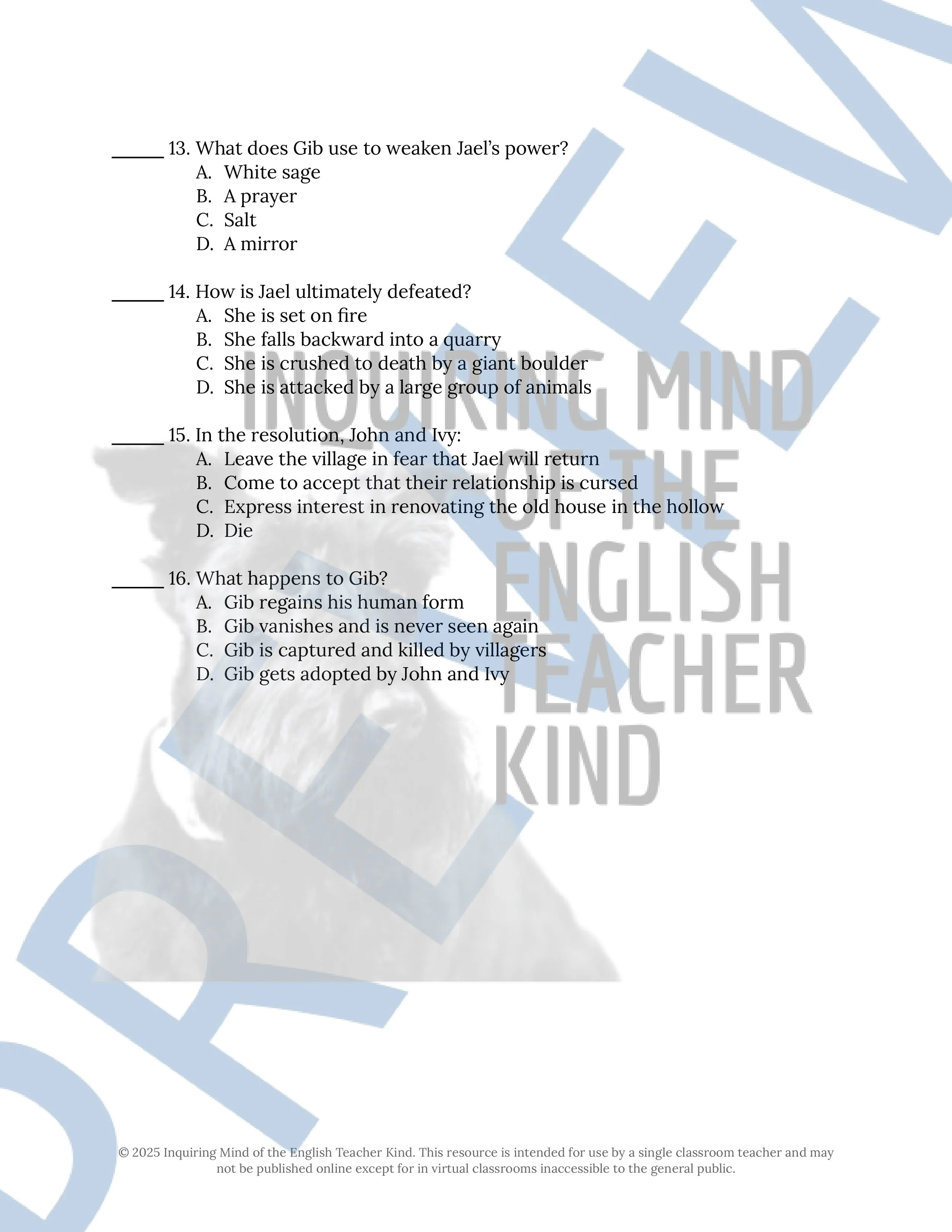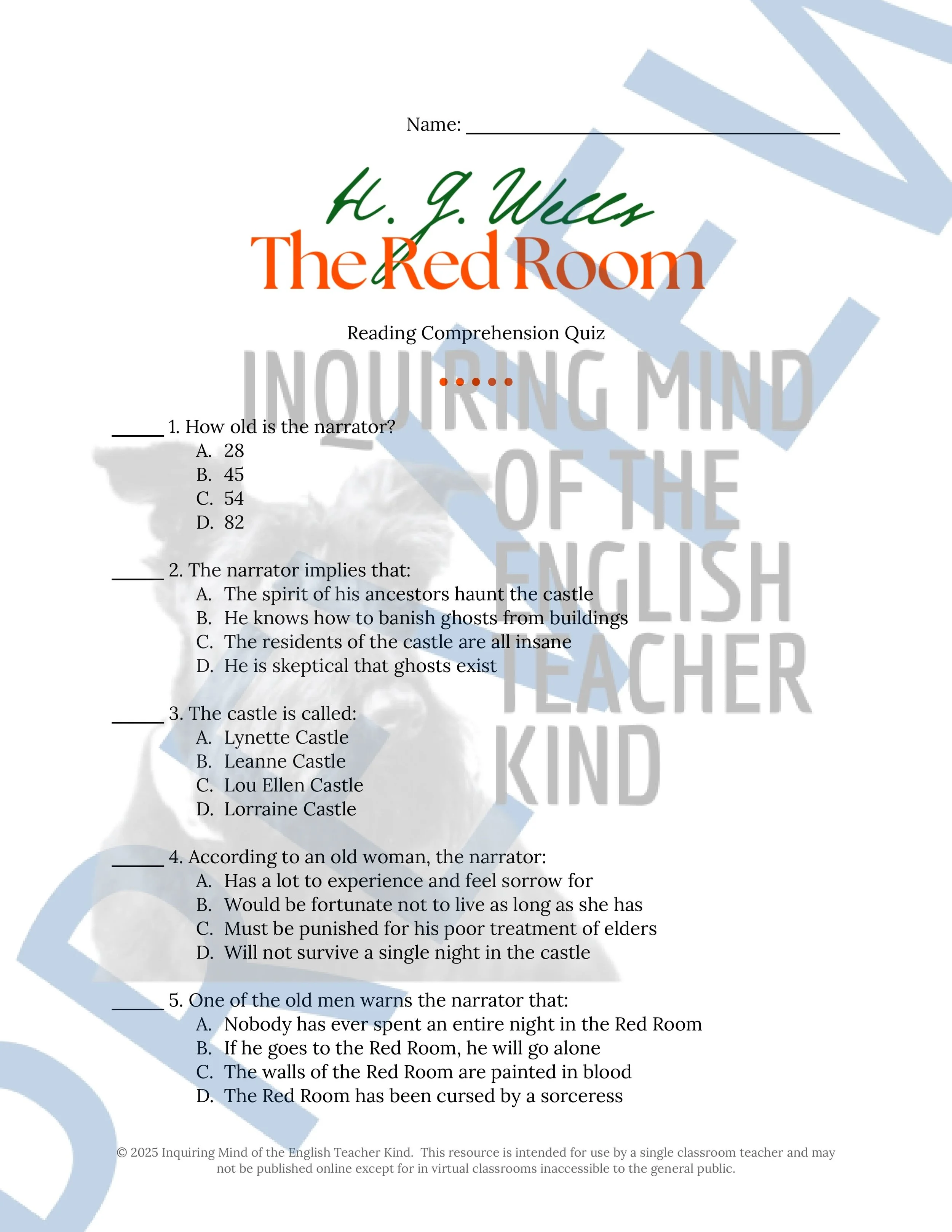 Image 1 of 15
Image 1 of 15

 Image 2 of 15
Image 2 of 15

 Image 3 of 15
Image 3 of 15

 Image 4 of 15
Image 4 of 15

 Image 5 of 15
Image 5 of 15

 Image 6 of 15
Image 6 of 15

 Image 7 of 15
Image 7 of 15

 Image 8 of 15
Image 8 of 15

 Image 9 of 15
Image 9 of 15

 Image 10 of 15
Image 10 of 15

 Image 11 of 15
Image 11 of 15

 Image 12 of 15
Image 12 of 15

 Image 13 of 15
Image 13 of 15

 Image 14 of 15
Image 14 of 15

 Image 15 of 15
Image 15 of 15
















"Young Goodman Brown" Quiz, Vocabulary Games, and Inference Worksheets Bundle
Evaluate general reading comprehension and support the development of close reading analysis skills with this bundle of formative assessments covering Nathaniel Hawthorne's short story "Young Goodman Brown." Included are the following: a plot-based quiz, a worksheet composed of rigorous close reading questions, a craft analysis activity, a vocabulary application worksheet, a word search game, a crossword puzzle, the public domain narrative, and answer keys. Materials are delivered in Word Document and PDF formats. (Alternatively, a Google Drive bundle option is available.) By engaging with these materials, students will:
Identify what the text states both explicitly and implicitly
Determine the narrative's dominant conflict
Articulate how the narrative is consistent with the conventions of Dark Romanticism (Gothic literature)
Discern the intended effect of the author's language
Explore how complex characters think, behave, interact, and develop
Apply knowledge of literary devices including anaphora, ambiguity, personification, foreshadowing, simile, and onomatopoeia
Support claims and inferences with sound reasoning and relevant evidence
Write about fiction with clarity, accuracy, and precision
This resource may facilitate small-group discussions in which students decode language and pose/respond to questions relating to plot, broad topics, and character development. Using this resource for structured guidance, students will improve their ability to present information, conclusions, and supporting textual evidence clearly and convincingly.
Resources are available for a variety of Gothic novels and short stories:
* This resource is also included in a whole store growing bundle.
Evaluate general reading comprehension and support the development of close reading analysis skills with this bundle of formative assessments covering Nathaniel Hawthorne's short story "Young Goodman Brown." Included are the following: a plot-based quiz, a worksheet composed of rigorous close reading questions, a craft analysis activity, a vocabulary application worksheet, a word search game, a crossword puzzle, the public domain narrative, and answer keys. Materials are delivered in Word Document and PDF formats. (Alternatively, a Google Drive bundle option is available.) By engaging with these materials, students will:
Identify what the text states both explicitly and implicitly
Determine the narrative's dominant conflict
Articulate how the narrative is consistent with the conventions of Dark Romanticism (Gothic literature)
Discern the intended effect of the author's language
Explore how complex characters think, behave, interact, and develop
Apply knowledge of literary devices including anaphora, ambiguity, personification, foreshadowing, simile, and onomatopoeia
Support claims and inferences with sound reasoning and relevant evidence
Write about fiction with clarity, accuracy, and precision
This resource may facilitate small-group discussions in which students decode language and pose/respond to questions relating to plot, broad topics, and character development. Using this resource for structured guidance, students will improve their ability to present information, conclusions, and supporting textual evidence clearly and convincingly.
Resources are available for a variety of Gothic novels and short stories:
* This resource is also included in a whole store growing bundle.


Preview this resource:
Evaluate general reading comprehension and support the development of close reading analysis skills with this bundle of formative assessments covering Nathaniel Hawthorne's short story "Young Goodman Brown." Included are the following: a plot-based quiz, a worksheet composed of rigorous close reading questions, a craft analysis activity, a vocabulary application worksheet, a word search game, a crossword puzzle, the public domain narrative, and answer keys.
























































































